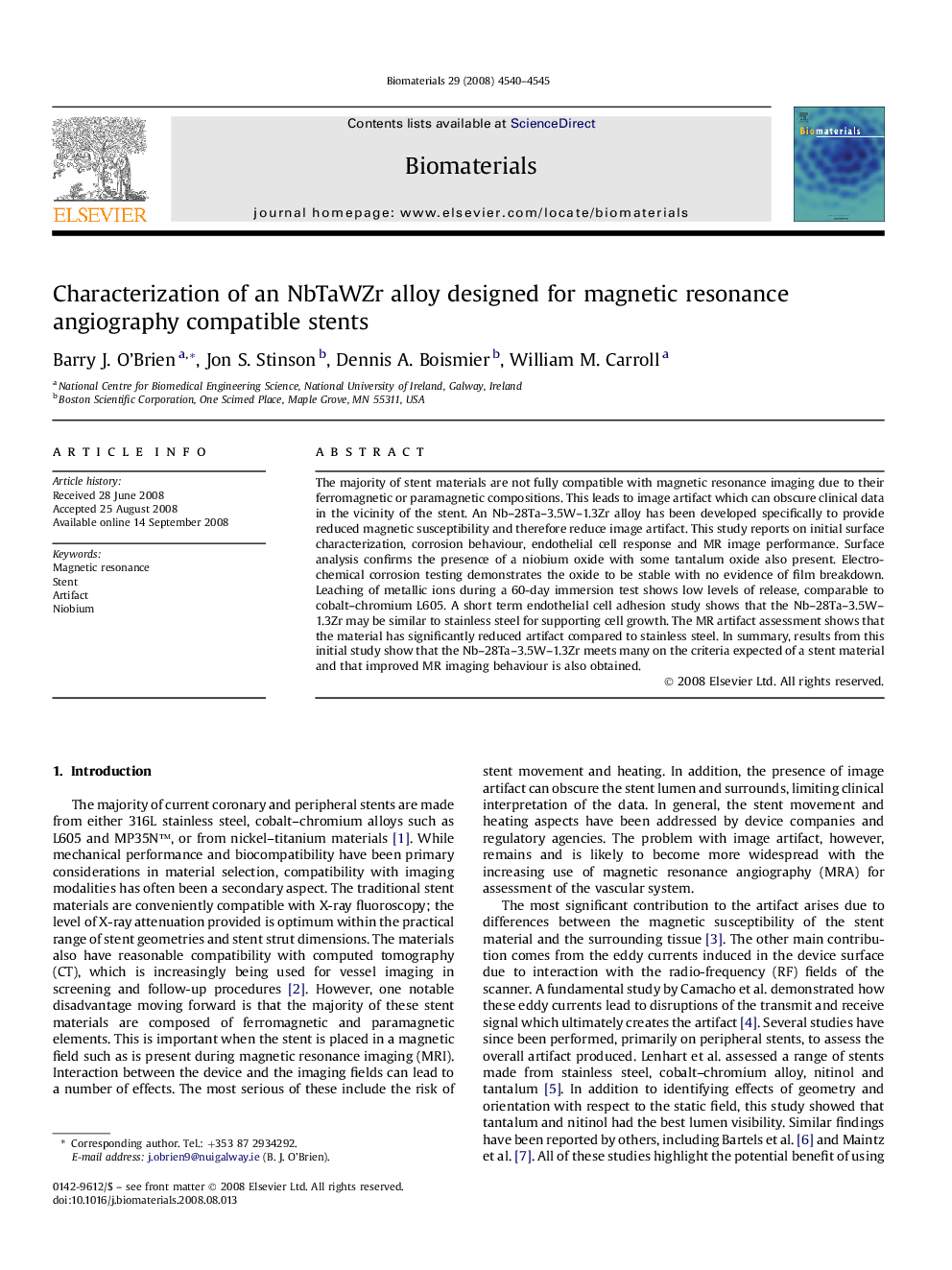| Article ID | Journal | Published Year | Pages | File Type |
|---|---|---|---|---|
| 9662 | Biomaterials | 2008 | 6 Pages |
The majority of stent materials are not fully compatible with magnetic resonance imaging due to their ferromagnetic or paramagnetic compositions. This leads to image artifact which can obscure clinical data in the vicinity of the stent. An Nb–28Ta–3.5W–1.3Zr alloy has been developed specifically to provide reduced magnetic susceptibility and therefore reduce image artifact. This study reports on initial surface characterization, corrosion behaviour, endothelial cell response and MR image performance. Surface analysis confirms the presence of a niobium oxide with some tantalum oxide also present. Electrochemical corrosion testing demonstrates the oxide to be stable with no evidence of film breakdown. Leaching of metallic ions during a 60-day immersion test shows low levels of release, comparable to cobalt–chromium L605. A short term endothelial cell adhesion study shows that the Nb–28Ta–3.5W–1.3Zr may be similar to stainless steel for supporting cell growth. The MR artifact assessment shows that the material has significantly reduced artifact compared to stainless steel. In summary, results from this initial study show that the Nb–28Ta–3.5W–1.3Zr meets many on the criteria expected of a stent material and that improved MR imaging behaviour is also obtained.
